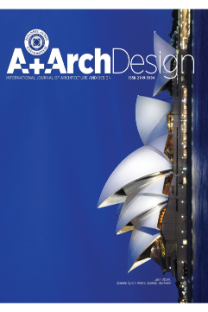Süsleme Suç Mu? Mimarlıkta Süslemenin Temsili Doğasını Tartışmak
Süsleme, kavramsal ve kültürel bir tartışmadır. Ancak mimarlıkta süsleme genellikle biçimsel ve yüzeysel
bir inşa ve tartışma olmaya indirgenmiştir. Süsleme, önemli temsil araçlarından biridir. Daha çok doğayı ve
doğal oluşumları temsil etmiştir. Ancak erken 20. yüzyılda temsiliyet kaynağının doğadan kültüre doğru
değişim göstermiş olması süslemenin yeniden tanımlanmasına, hatta mimarlıkta süslemeye karşı çıkılmasına
neden olmuştur. Modern mimarlar, süslemeye modern kültürü temsil etmediği gerekçesiyle karşı çıkmıştır.
Buna karşılık, post-modern mimarlar yüzyılın ikinci yarısında süslemeyi başlıca temsiliyet aracı olarak kabul
etmiş ve kullanmıştır. Bu, mimarlıkta süslemenin geri dönüşü olarak ele alınmıştır. 21. yüzyılın mimarlığında
ise süslemenin yeniden keşfedildiği anlaşılmaktadır. Dijital teknolojinin gelişmesiyle süsleme bugün medyatik,
filogenetik, kaotik, eksantrik, hipnotik, fotojenik ve parametrik gibi yeni kavramlarla tanımlanmakta ve
tartışılmaktadır. Öyle ki, süsleme artık dijital kültürü temsil etmektedir. Bu makalenin amacı, mimarlıkta
süslemenin kavramsal ve kültürel çerçevesinin önemli bir değişim geçirdiğini ortaya koymaktır. Bu değişimi
anlamak, süslemenin hem bir tasarım hem de bir temsil aracı olarak yeniden keşfedilmiş olduğu 21. yüzyılda
mimarlar için kritik bir önem taşımaktadır. Bu nedenle, makalede süslemenin değişen temsili doğası
tartışılmaktadır. Bu tartışma, mimarlık alanında süsleme üzerine yapılacak olan yeni tartışmalar için
kuramsal bir altlık oluşturacaktır.
Anahtar Kelimeler:
Mimari tasarım, mimari kuram, süslemeli mimarlık, süs, süsleme
Is Ornament Crime? Discussing The Representative Nature of Ornament in Architecture
Ornament is a conceptual and cultural discussion. But it is generally reduced to
being discussed as a formal and superficial construction. It is one of the main tools of representation. It mainly
represents nature. However, the change in its source of representation from nature to culture in the early 20th
century leads ornament to be redefined, and even refused in architecture. Modern architects accuse it of being
a crime not capable of representing modern culture. Post-modern architects embrace ornament as the main
tool of representation in the second half of the century. It is called as the return of ornament in architecture.
Today, the reinvention of ornament is rather discussed in the architecture of the 21st century. It is discussed
by new concepts such as mediatic, phylogenetic, chaotic, eccentric, hypnotic, photogenic, and parametric due
to the developments in the digital technology. As such, ornament now represents digital culture. The aim of
this paper is to reveal the fact that conceptual and cultural framework of ornament is significantly changed in
architecture. It is critically important to understand this change for architects in the 21st century in which
ornament is rediscovered both as a tool of design and representation. The changing representative nature of
ornament is therefore discussed in the paper. It will constitute a theoretical basis for further discussions on
ornament in architecture.
Keywords:
Architectural design, architectural theory, ornamental architecture, ornament, ornamentation,
___
- [1] Loos, A. (1970). Ornament and Crime. Programs and Manifestoes on 20th Century Architecture. Ed. U. Conrads. Cambridge; The MIT Press.
- [2] Etymology Online Dictionary (2019). The Etymology of Ornament. Available at: https://www.etymonline.com/search?q=ornament.
- [3] Ots, E. (2011). Decoding Theoryspeak: An Illustrated Guide to Architectural Theory. New York; Routledge.
- [4] Pell, B. (2010). The Articulate Surface: Ornament and Technology in Contemporary Architecture. Basel; Birkhauser.
- [5] Lynn, G. (2004). The Structure of Ornament. Digital Tectonics. Ed. N. Leach, D. Turnbull & C. Williams. West Sussex; John Wiley & Sons Ltd.
- [6] Gleiter, J. H. (2012). What is Ornament? Ornament Today: Digital, Material, Structural. Ed. J. H. Gleiter. Bolzano; Bolzano University Press.
- [7] Semper, G. (1989). The Four Elements of Architecture and Other Writings. Cambridge; Cambridge University Press.
- [8] Rykwert, J. (1982). Ornament is no Crime. The Necessity of Artifice. Ed. J. Rykwert. New York; Rizzoli Publications.
- [9] Levit, R. (2008). Contemporary ornament: The return of the symbolic repressed. Harvard Design Magazine, No. 06, 71-85.
- [10] Moussavi, F., Kubo, M. (2015). The Function of Ornament. Barcelona; Actar Publishing.
- [11] URL-1. https://ascholarlyskater.com/2017/10/17/a-guide-to-gothic-architecture/, Ascholarlyskater, last accessed on 04 June 2020
- [12] URL-2. https://ascholarlyskater.com/2017/11/30/guide-renaissance-architecture/, Ascholarlyskater, last accessed on 04 June 2020
- [13] URL-3. https://www.e-architect.co.uk/rome/santa-maria-della-pace, E-architect, last accessed on 04 June 2020
- [14] URL-4. https://www.flickr.com/photos/24364447@N05/5222076286, Flickr, last accessed on 04 June 2020
- [15] URL-5. https://www.archdaily.com/59412/ad-classics-seagram-building-mies-van-der-rohe, Archdaily, last accessed on 04 June 2020
- [16] URL-6. https://www.widewalls.ch/defining-postmodern-architecture/, Widewalls, last accessed on 04 June 2020
- [17] Cache, B. (2007). Digital Semper. Rethinking Technology: A Reader in Architectural Theory. Ed. W. W. Braham, J. A. Hale. New York; Routledge.
- [18] Picon, A. (2010). Digital Culture in Architecture: An Introduction for the Design Professions. Basel; Birkhauser.
- [19] Picon, A. (2013). Ornament: The Politics of Architecture and Subjectivity. Chichester; Wiley Publications.
- [20] URL-7. https://www.architonic.com/es/project/frank-o-gehry-fondation-louis-vuitton/5103341, Architonic, last accessed on 04 June 2020
- [21] URL-8. https://inhabitat.com/construction-crawls-ahead-on-herzog-de-meurons-elbphilharmonie, Inhabitat, last accessed on 04 June 2020
- [22] Balık, D., Allmer, A. (2016). A critical review of ornament in contemporary architectural theory and practice. ITU Journal, No. 1, 157-169.
- [23] Balık, D. (2016). Ornament: The politics of architecture and subjectivity. The Journal of Architecture, No. 8, 1336-1339.
- [24] URL-9. https://tr.pinterest.com, Pinterest, last accessed on 04 June 2020 [25] URL-10. https://tr.pinterest.com, Pinterest, last accessed on 04 June 2020
- [26] Kipnis, J. (2012). The Cunning of Cosmetics: A Personal Reflection on the Architecture of Herzog & De Meuron. Constructing a New Agenda: Architectural Theory 1993-2009. Ed. K. Sykes. New York; Princeton Architectural Press.
- [27] Chevrier, J. F., Herzog, J. (2006). Ornament, Structure, Space: A conversation with Jacques Herzog. Barcelona; El Croquis.
- [28] Benjamin, A. (2006). Surface effects: Borromini, Semper, Loos. The Journal of Architecture, No. 1, 1- 35.
- [29] URL-11. http://architettura.it/inabit/20020215/index.htm, Architettura, last accessed on 04 June 2020
- ISSN: 2149-5904
- Başlangıç: 2015
- Yayıncı: İstanbul Aydın Üniversitesi
